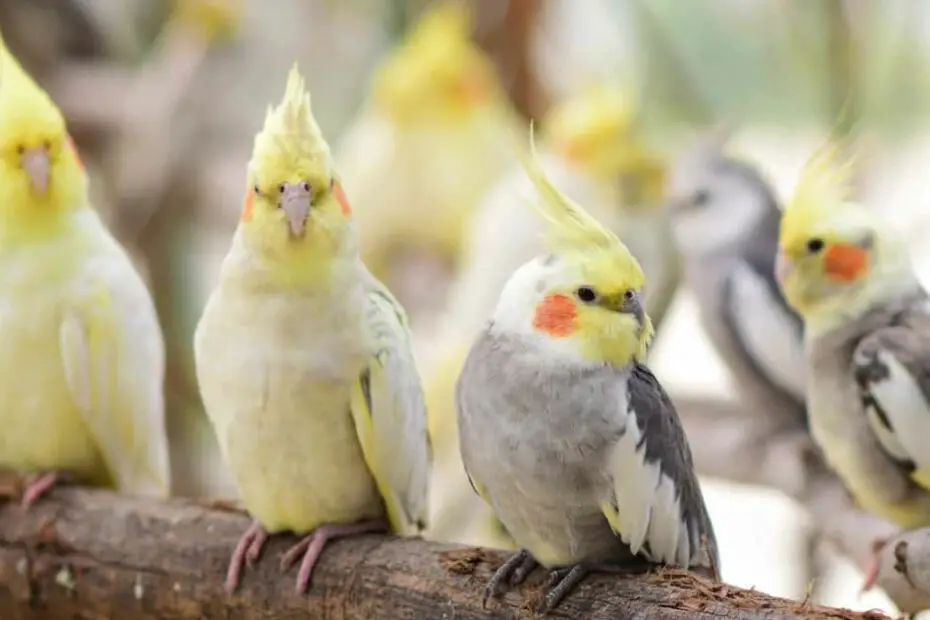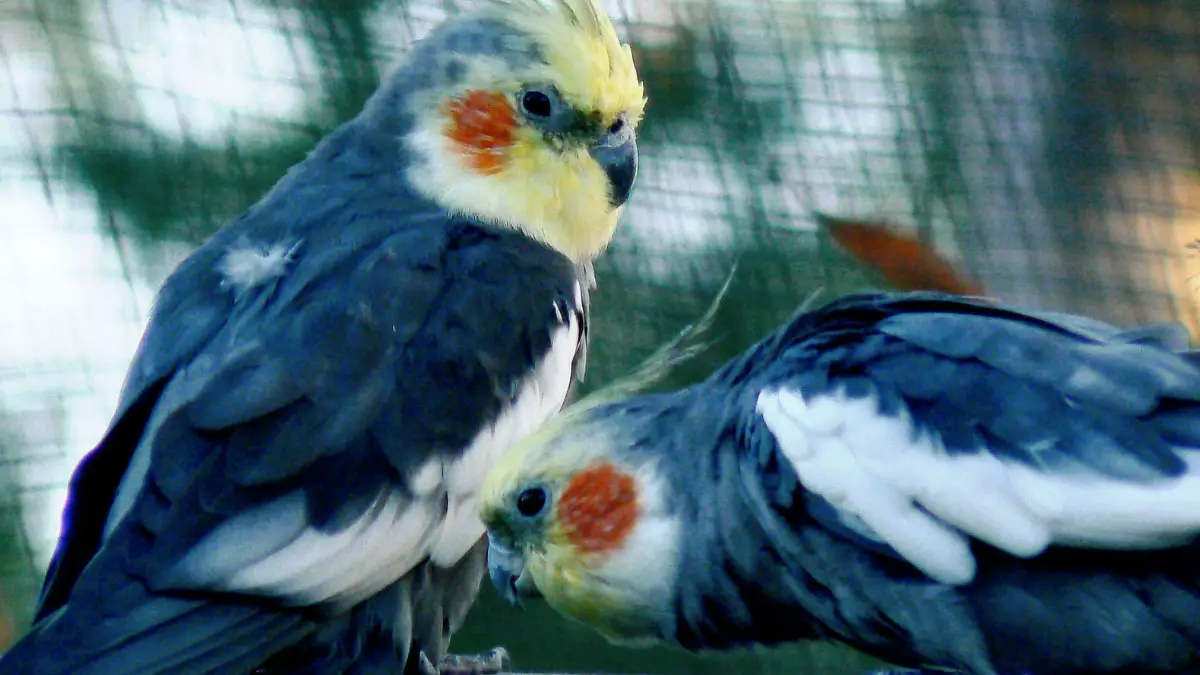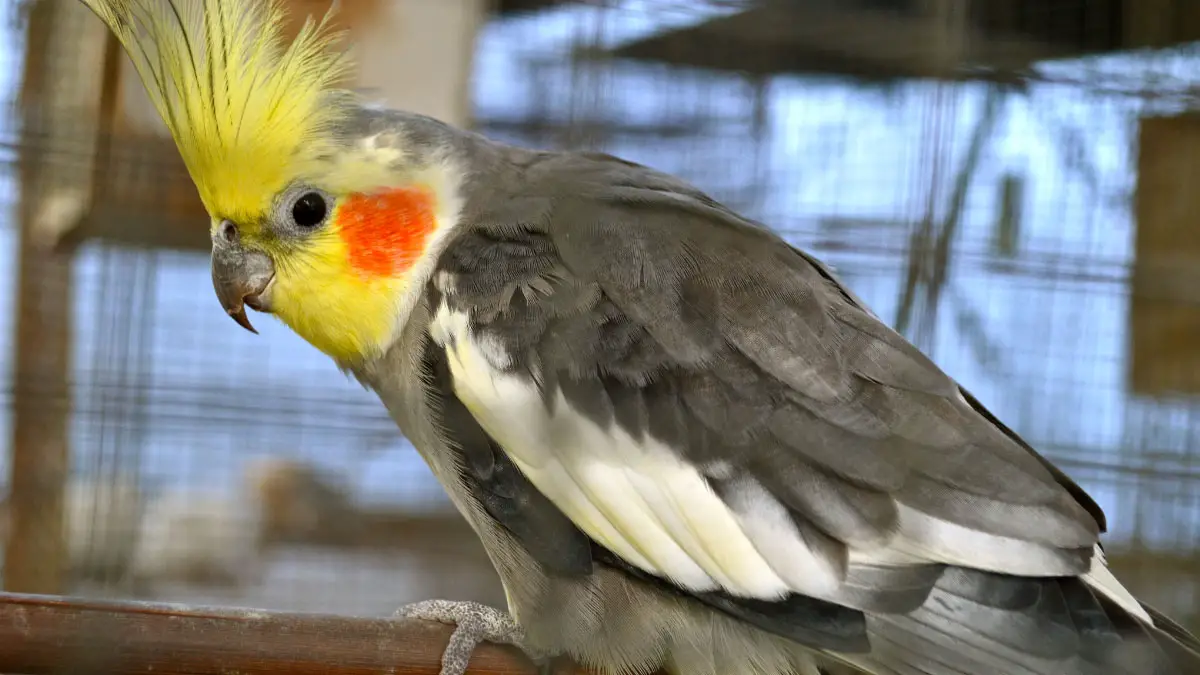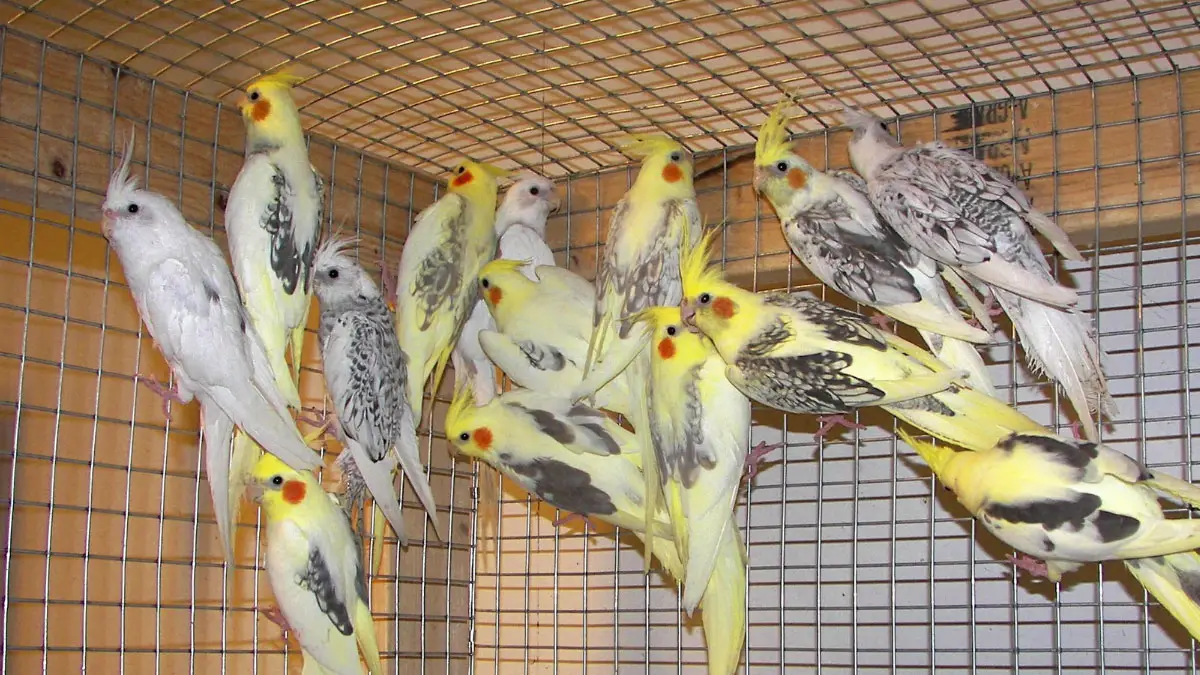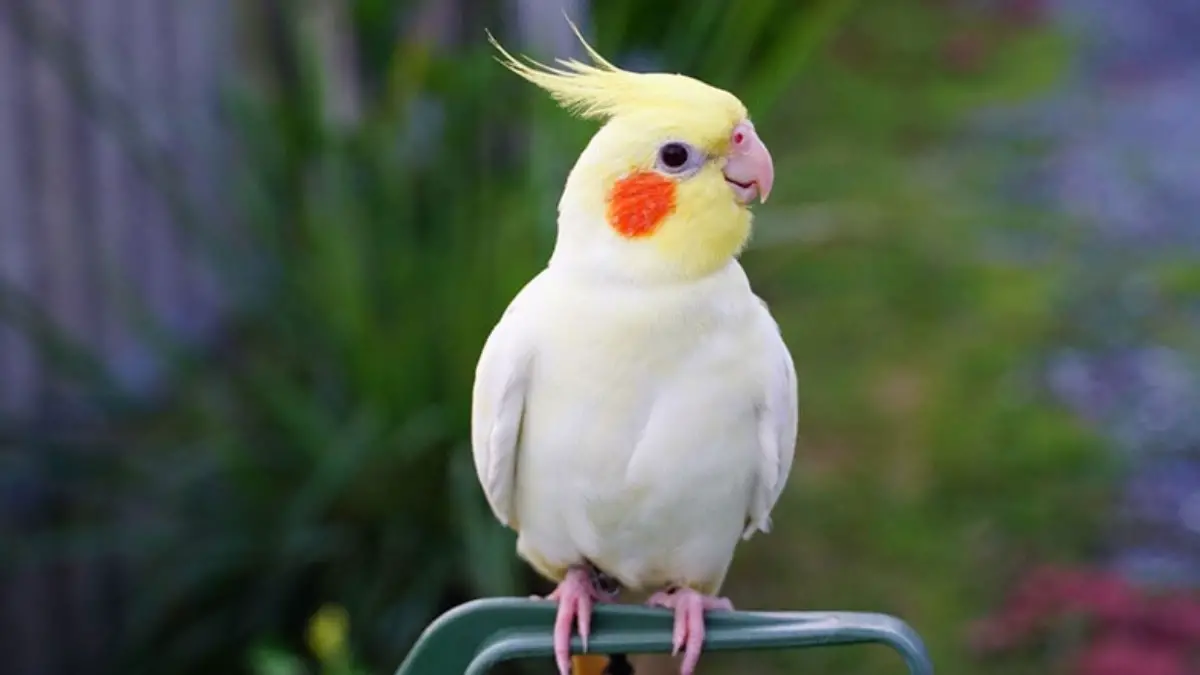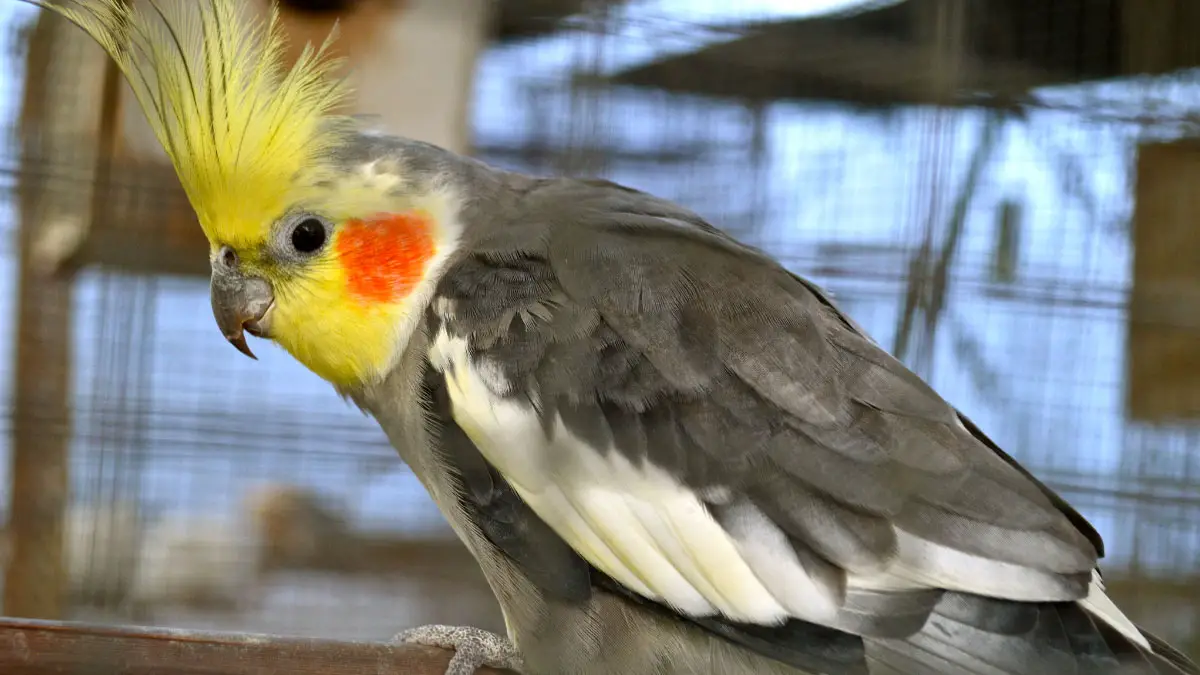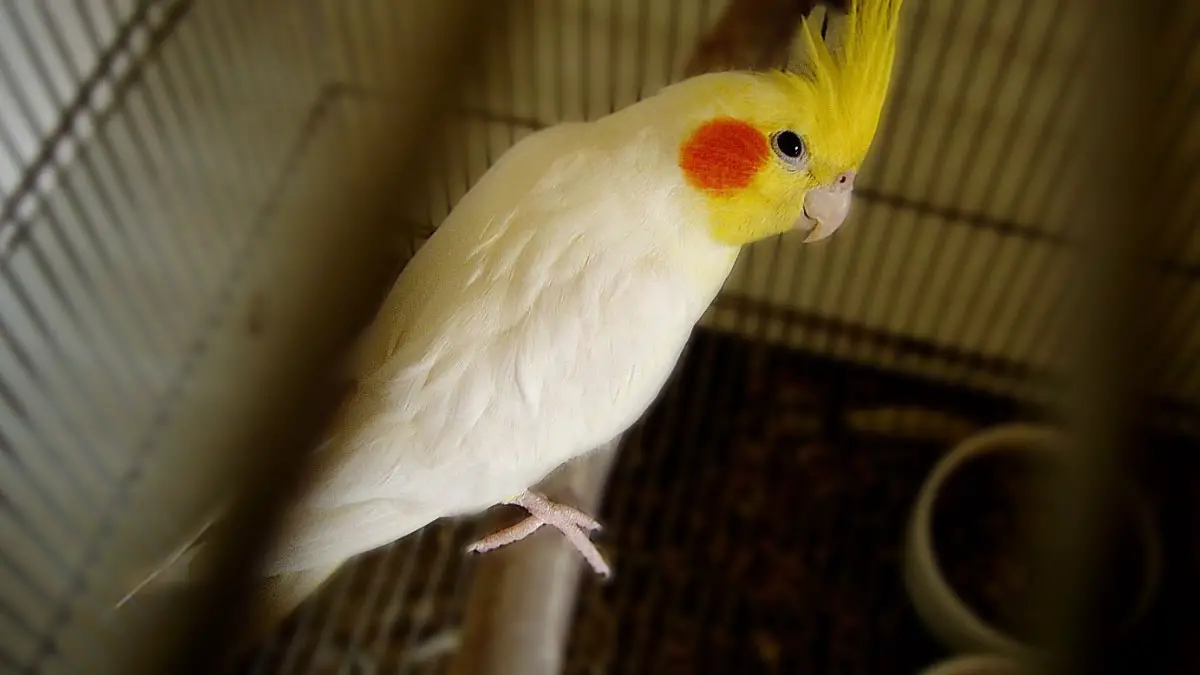The cockatiel is a famous pet choice, known for its outstanding patterns and friendly behavior. And these birds have a wide range of colors and mutations, making them an eye-catching sight for all viewers.
So, what are the different cockatiel colors and mutations? It is because the cockatiel is avian species. These colors include Normal Gray, Lutino, Silver, and many more. Each and every mutation is unique and affects the appearance of the birds.
Proper research and understanding of birds breeding and its variations are important for researchers. It also allows bird enthusiasts and experts to know more about the species and appreciate their beautiful existence in nature.
In this article, we will discuss the different mutations and colors of the cockatiel species. We will also talk about how variety affects the behavior and features of the birds in detail. So, continue reading till the end of the pet care guide!
A Complete List Of 21 Cockatiel Mutations:
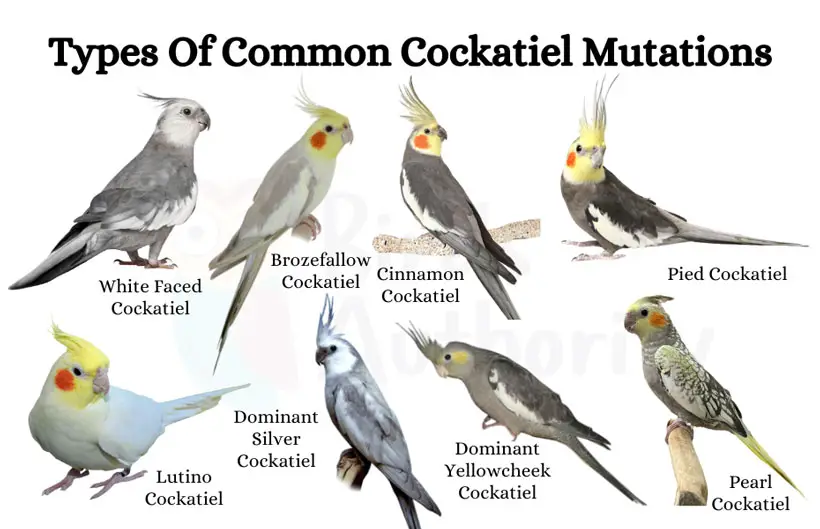
- Normal grey Cockatiel
- Pied Cockatiel
- Lutino Cockatiel
- Cinnamon Cockatiel
- Ashen dilute cockatiel (Dominant silver)
- White-faced cockatiel
- Dilute cockatiel
- Pearl cockatiel (Opaline cockatiel)
- Yellow-suffused cockatiel
- Palefaced cockatiel
- Recessive ino cockatiel
- Faded cockatiel
- Edgedilute cockatiel
- Creamino cockatiel
- Dominant yellowcheek cockatiel
- Sex-linked yellowcheek cockatiel
- Pallid cockatiel
- Ashenfallow cockatiel
- ADMpied cockatiel (Recessivepied cockatiel)
- Brozefallow cockatiel
- Fallow cockatiel
- Dominant silver cockatiel
Understanding Cockatiel Colors and Mutations
As we mentioned earlier, there is a wide range of cockatiel colors and mutations available in regions all around the globe. Some of the most common variations of the species are normal gray, pied, cinnamon, and lutino. Let us know a bit about these bird genetics and alterations.
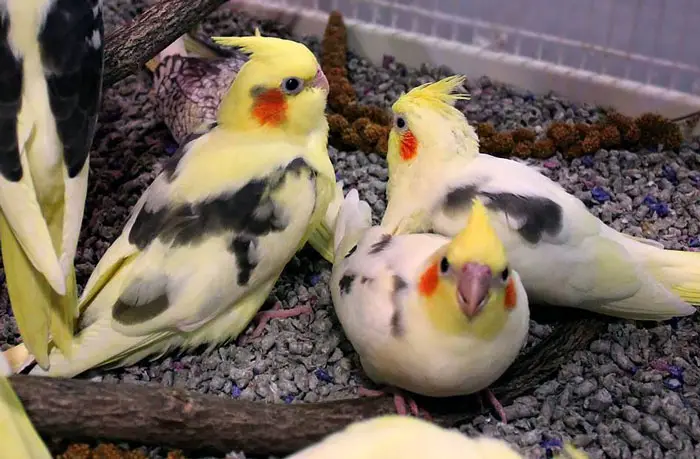
Normal Gray
One of the most common types of cockatiel colors you will find in nature is the normal gray species. With white edges, the tail and the wings of the bird are a dark shade of gray.
The body has a lighter gray shade, whereas the head has a yellow-orange color. Not only that, but the eyes of the birds have white circles surrounding them.
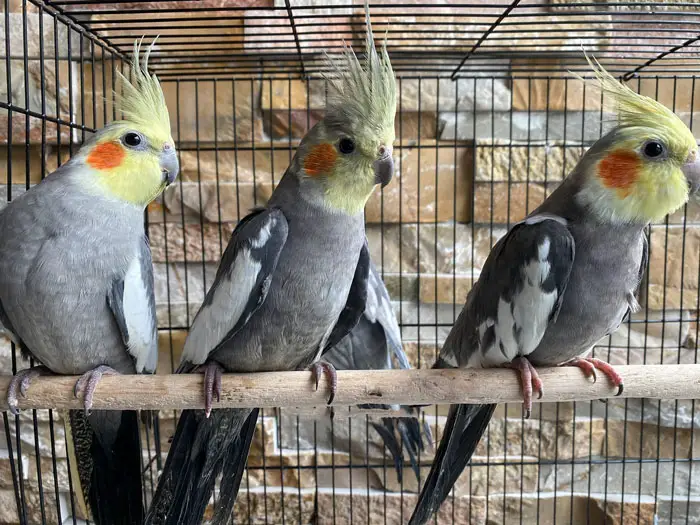
Pied
They have a wide mixture of colors on their body. The gray plumage on their body often comes with white or yellow patches.
However, the color of the patches can vary from one bird to another. In a few rare cases, you will find that pied cockatiels are completely white.
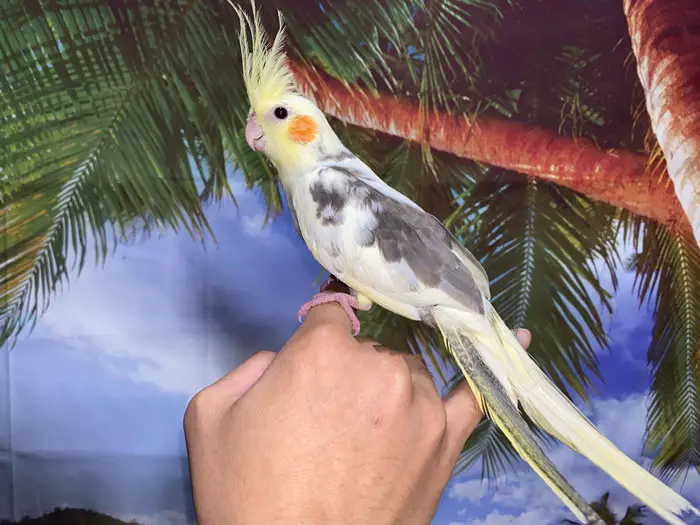
Cinnamon
Even though the pied and normal gray mutations are typically gray, the cinnamon species has a different color. It is typically reddish-brown in color with dark brown wings and tail.
Similar to the normal gray type, it also has white edges on the tail and wings. However, the face has a yellowish coloring with dark eyes.
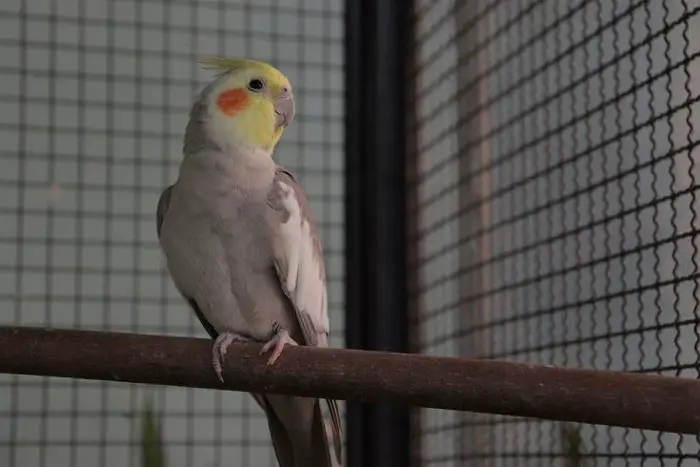
Lutino
Lutino cockatiels have beautiful and eye-catching colors. The birds are mostly yellow or white with red eyes. Not only that, but their faces often have orange patches, giving them a stunning look.
Unlike the other types mentioned above, the lutino cockatiels do not have brown or gray shades on their body or wings.
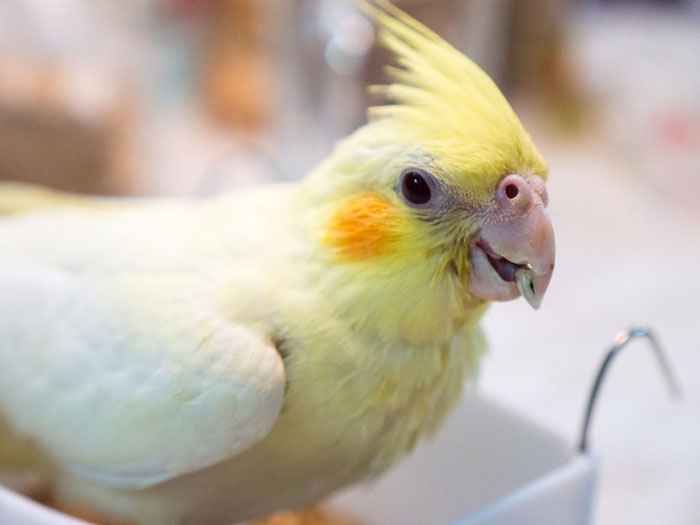
Different Types Of Mutations
The mutation of cockatiels can be categorized into two types. These types are sex-linked and autosomal. Take a look at the details of these two mutation types.
Sex-Linked Mutations
The most common variation seen in cockatiels is the sex-linked mutation. In birds, the females carry ZW chromosomes, whereas the male species carry ZZ chromosomes. These genetic mutations typically impact the coloration and behavior of the avian species.
Lutino mutation is the common variation caused by sex-linked alteration. This causes a yellowish and white coloration on the feathers of the birds. And the mutation occurs due to a recessive gene on the sex chromosomes in the parents. Other than that, the pearl is also a common sex-linked mutation.
Autosomal Mutations
The autosomal variations in cockatiels typically occur due to genetic variations. The recessive gene on any of the 22 autosomes is responsible for the alteration in birds. One of the most common examples of this variation is the pearl mutation of cockatiels.
This causes white or gray feathers on the body of the birds. Not only that but pearl-like markings can also be seen on the wings.
The cinnamon mutation is also a common variation of the cockatiel species and breeds caused by autosomal alterations. This causes the brown color on the feathers and body of the bird. Other than that, there are pied and whiteface mutations too.
How Mutations Affect Pigmentation And Feather Structure?
There are several ways through which mutations can impact the pigmentation and feather structure of cockatiels. These can lead to unique and distinctive appearances in the birds.
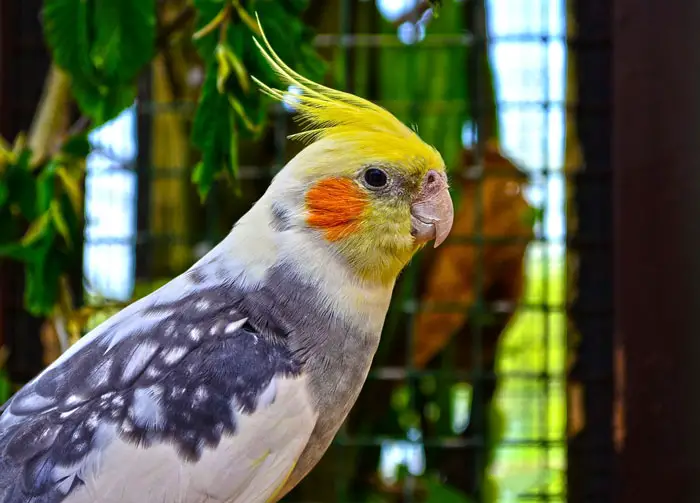
Pigmentation in birds typically refers to the colors seen in the feathers. This is usually affected due to the presence or absence of pigments in the body, such as melanin, psittacines, and so on. Psittacines pigmentation refers to red, orange, yellow, etc., colors in the body.
Melanin usually affects the brown, gray, or black coloration of the features of the cockatiels. Mutations also impact the feather structure of cockatiels. It changes the appearance of the birds, resulting in specific patterns and spots on the feathers.
How Selective Breeding And Hybridization Works In Cockatiels?
Selective breeding and hybridization in cockatiel mutations can lead to the creation of new mutations and variations. In selective breeding, the owners and experts rely on the intentional breeding of cockatiels with specific traits. These include specific coloration and patterns, which leads to offspring carrying those traits.
Selective breeding cockatiel mutations can be done between both closely related and non-related cockatiel species. Through this, the owners and experts can create new variations that are not naturally available in the wild.
In hybridization, two different species or subspecies of cockatiels are bred together to create offspring. This typically results in a combination of inherited traits in birds from both parents.
Identifying and Breeding Cockatiel Colors and Mutations
Identifying and understanding cockatiel colors and mutations is not an easy task. It requires a detailed understanding of the mutation patterns and species, along with inheritance styles. Check out the top tips on identifying and breeding cockatiel colors and variations.
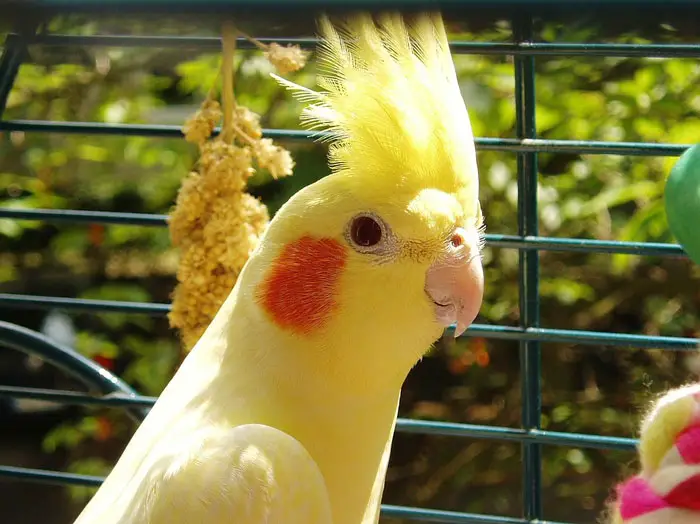
Visual Identification
One of the best ways of identifying the mutations is to rely on visual identifications and bird anatomy. As mentioned before, every mutation of cockatiels has specific characteristics and features.
These features make it easier for experts, owners, and researchers to identify the breed and mutation of the birds.
DNA Testing
Testing the genetics of the birds is an effective method of knowing the variation. It can also help to know the gender of the bird easily. The process is typically useful to identify the recessive gene that does not have a physical impact on the appearance.
How To Breed Cockatiels For Specific Colors and Mutations?
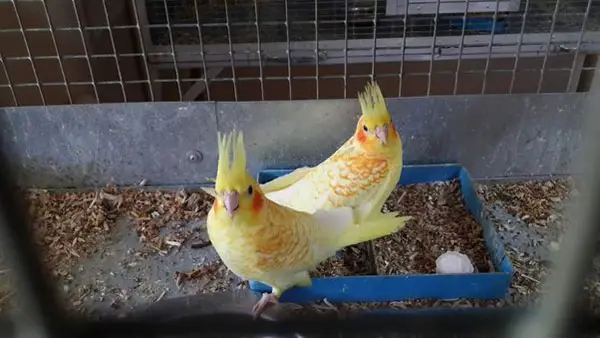
Selective breeding cockatiels for specific colors requires a clear understanding of their genetics and behavior. Let us take a look at how to breed specific colors and mutations for cockatiels.
- Understand Genetics: The very first step of the breeding process is to understand the genetics of the birds. It is essential to know the inheritance pattern of the birds and their mutation type. While some variations are autosomal, some of them occur due to sex-linked variations.
- Selecting Breeding Stock: After mastering the genetic variation, you will have to select breeding stock. Make sure to choose birds that have complementary variations to ensure specific and unique breeding. However, try to avoid inbreeding as it can cause genetic problems in the offspring.
- Patience: Patience is extremely crucial when breeding cockatiels for mutation. This is because receiving the desired trait in the offspring is not always possible on the first try. In cases like these, the owners have to be patient and persistent about the techniques and use of bird breeding equipment.
- Monitor and Keep Records: Monitoring the breeding outcomes and keeping proper records is essential. It helps the breeders to take notes of the results and make adjustments where needed. Not only that, but it also helps to prevent genetic disorders in future breeding sessions.
Importance Of Proper Breeding Practices
Making sure that the proper practices when breeding are being followed are crucial for the health and welfare of the birds.
Avoiding birds with health issues or genetic disorders is also essential. Before breeding, make sure that the cockatiels are in proper shape and condition. Ensure a safe and clean environment for breeding.
Genetic testing is also a crucial part of safe breeding practices. It can help to identify the abnormalities in the mutation. Not only that, but it can also help to avoid the breeding of a pair with the same mutation.
How To Manage And Maintain Different Mutations In A Breeding Flock
Proper management and maintenance of the different mutations in a breeding flock require understanding and patience. There are quite a few key steps for managing and maintaining the variations properly. Check out these steps here.
- Rotate The Breeding Pairs: Do not breed the same pairs over and over again. This helps to prevent inbreeding and also reduces the risk of genetic problems. Rotate the breeds regularly and try to pair them with birds with complementary mutations.
- Monitor Health Issues: Breeders must keep a close eye on the breeding birds for any signs of health issues and disorders. This helps the breeders to remove sick birds from the breeding pairs. And the removal of these birds is essential to prevent genetic disorders from being carried down to the offspring.
- Provide a Healthy Environment: Ensuring a proper environment to breed cockatiels is essential for proper health conditions. Make sure that the environment is stress-free with proper accommodation, a balanced diet, clean water, and so on.
Caring for Cockatiels with Different Colors and Mutations
Despite their color or mutation, all cockatiels require a certain healthy diet and good overall care. And as a pet owner, it’s advised to have proper knowledge regarding their well-being if you wish to keep or breed them.
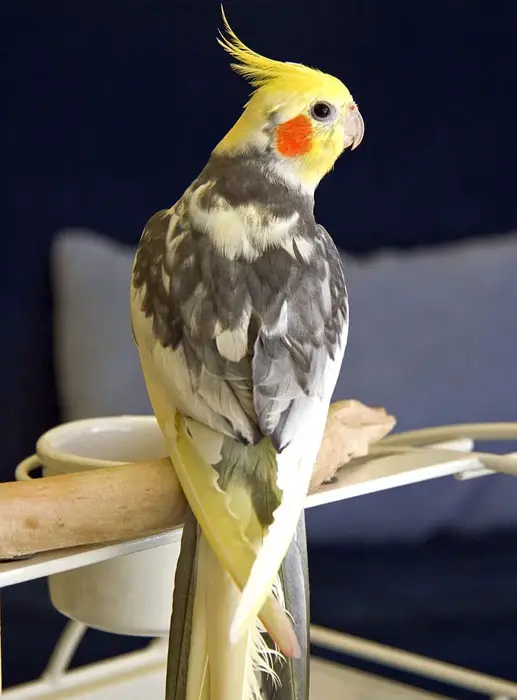
Diet
Providing proper bird nutrition with a balanced diet is essential for the health of the cockatiels. Despite their variants, cockatiels share a similar diet and nutrition requirement.
Make sure to understand the dietary needs of the mutation of the cockatiel and provide food and supplies accordingly. Ensure fresh water every day to the cockatiels and do not forget to provide treats regularly.
General Care
Provide the cockatiels with a spacious cage to ensure proper movement and space. Ensure perches and texture to encourage movement. You may also opt for various bird accessories which they can play with. Make sure to interact with the birds regularly and keep their cages clean.
Bedding and Nesting
Comfortable bedding and nesting for the cockatiels is a must. This is particularly important during the breeding season as the birds require both comfort and safe space.
Line the cage bottom with suitable materials, such as wood shavings, paper-based products, and so on. These will make sure that the birds receive proper comfort.
Medical Care
Proper medical care is essential to ensure proper bird health and healthy bird psychology. Schedule regular check-ups with vets and ensure proper diagnosis and medication. Keep track of all the required avian vaccinations and make sure that the cockatiels are timely vaccinated.
Moreover, understanding bird behavior is a must in order to notice any abnormality.
In case a problem is noticed with the behavior of the birds, make sure to take prompt action. Identify the reason behind the problem and find a sustainable solution to it. Do not hesitate to take help from a vet regarding the behavior of the birds.
FAQs
Let’s look into some of the most frequent questions people have regarding the matter!
Yes, a few are more popular than the other cockatiels. The reason behind this is the bright colors, behavior, friendly nature, etc., of the birds. This is typically dependent on the preference and choices of people.
Yes, some mutations are often found to be more prone to health problems compared to others. This is because of the features and their impact on the body of the bird. While a few are prone to eye problems, some of them are prone to kidney diseases and heart issues.
Yes, when two cockatiels of different variations are bred together, they can create offspring with their combination. For example, if a lutino and normal gray cockatiels are bred together, the offspring will have the characteristics of both parents.
There is a big debate about the ethical consideration of hybridization breeding. Many people believe that preserving the natural traits of the species is important for nature. On the other hand, many believe that specific mutations can help to increase species diversity.
Observe the physical features of the bird and rely on visual identification. If you are still unsure, you can take the bird to a vet or professional breeder for identification. Not only that, but genetic testing might also be helpful in this case.
Conclusion
Cockatiels are beautiful creatures found in nature, and their wide range of mutations makes the species more interesting. Now that we are at the end of the discussion, we hope you have understood cockatiel colors and mutations in basics. Each mutation has its unique features which impact the behavior and appearance of the birds.
Understanding the variations properly is a must for breeders and pet owners to ensure proper veterinary care for pet birds. Not only that, but further research on the topic is highly crucial. This is because it can help people to breed healthy and beautiful variations of cockatiels. It will also help people to appreciate the beauty of the cockatiels.
